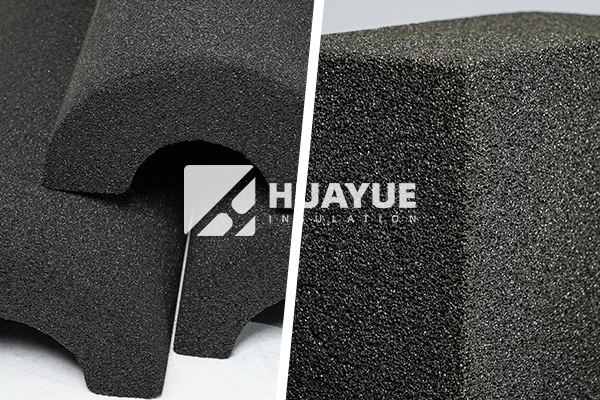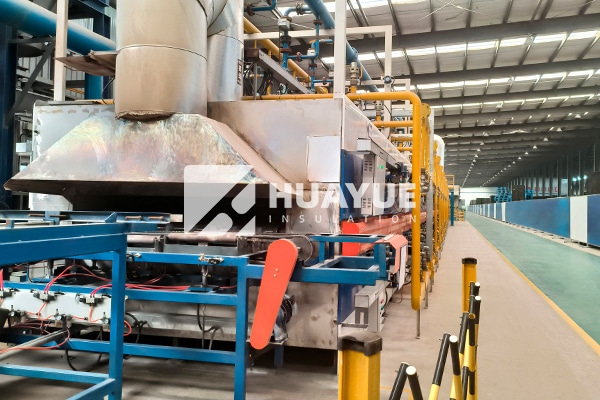When you need reliable insulation for tanks, confusion between cellular glass and foam glass can cause you to buy the wrong material or spend extra money fixing installation problems.
Cellular glass insulation and foam glass are actually the same material. Both describe a rigid, lightweight, non-absorbent product that gives tanks and pipes fire safety and strong thermal protection.

I remember my first time searching for insulation material. I saw ‘cellular glass’ listed in technical specs while suppliers kept offering ‘foam glass’. After calling and emailing several vendors, I discovered it was just a naming issue. ‘Cellular glass’ is how engineers describe it, and ‘foam glass’ is more common in marketing. Both names refer to insulation made from melted glass with a foaming agent, creating sealed bubbles inside. Since then, I always check both names on datasheets and ask my supplier to confirm before ordering.
Is FOAM GLASS the same as cellular glass?
Uncertainty about material names can cause big headaches. Ordering the wrong product is costly and wastes a lot of time.
Foam glass and cellular glass are just two names for the same insulation material. They have the same ingredients, performance, and uses, no matter what suppliers call them.

In plant projects, there’s always confusion about technical words. But experience showed me that ‘cellular glass’ is the formal term, while ‘foam glass’ often appears in sales conversations. Both are made by melting glass, adding a foaming agent, then cooling to get a solid, lightweight block full of tiny glass bubbles. The bubbles make it waterproof, fire-proof, and tough against chemicals. Now, whenever plant managers request foam glass, I double-check specs and labels to make sure it’s cellular glass insulation. It helps me avoid errors and keeps projects moving smoothly.
What are the disadvantages of cellular glass insulation?
Leaving out the weaknesses of cellular glass insulation means you get unexpected problems, like cracked surfaces or higher costs for repairs.
Cellular glass insulation can break or chip if dropped, costs more, doesn’t bend easily, and needs careful installation. It’s not suited for all shapes or high-impact jobs.

On one job, I saw cellular glass panels snap when workers dropped them. The material is tough against heat and moisture but brittle like most glass products. Repairs aren’t simple; you often have to replace an entire section. Price is another issue. Cellular glass costs more than mineral wool or rubber foam. You also need skilled workers, because installation takes time and extra care to avoid damage. The panels are stiff and don’t fit curved tanks or pipes without custom cuts. For tight bends, I choose rubber foam instead. Understanding these limits helps me plan which tanks and pipelines need cellular glass and which can use cheaper or flexible insulation.
What are the disadvantages of foam glass?
Expecting foam glass to solve all insulation problems leads to disappointment and more fixes than you planned.
Foam glass insulation is brittle, costs more than most others, doesn’t bend well, and needs expert handling. It’s prone to cracking with rough treatment.
Over years of tank upgrades, I found foam glass acts just like cellular glass—strong against heat and moisture, but easy to break if dropped or hit. When repairs are needed, it can mean replacing whole sections instead of making quick fixes. The price is higher, making it unrealistic for big coverage unless safety or performance demands it. For pipe runs with sharp bends or complex shapes, foam glass often won’t fit without hours of careful shaping. Transporting it takes care, because any crack during shipping becomes a costly headache on-site. I always compare project needs before choosing foam glass, using it only where wet conditions, chemicals, or strict fire codes leave no better choice.
What is cellular glass insulation used for?
Using cellular glass insulation the wrong way can lead to wasted materials and safety issues. But applying it for the right jobs gives tanks and equipment much longer life.
Cellular glass insulation is best for tanks and pipes in chemical plants, cryogenic storage systems, and anywhere there’s high risk from fire or moisture.
In my experience, cellular glass shines for the toughest jobs. On cold storage tanks, LNG pipes, and chemical storage, I recommend it because the sealed bubbles keep water out and stop corrosion under insulation. It works well even in freezing temperatures and never absorbs moisture from rain or cleaning. Because it doesn’t burn, I use it on systems facing strict safety laws. Whenever I have a job that has lots of water, chemicals, or potential fire danger, I go straight for cellular glass. Choosing the right places to use it means less replacement work and fewer safety incidents over the years.
Conclusion
Cellular glass and foam glass mean the same high-performance insulation. Both materials last long in wet or fire-prone places, but can break easily and cost more than other options.

